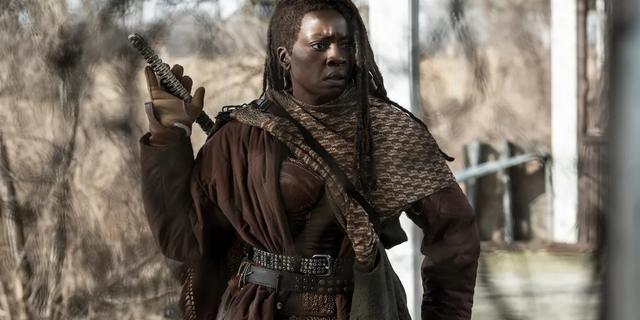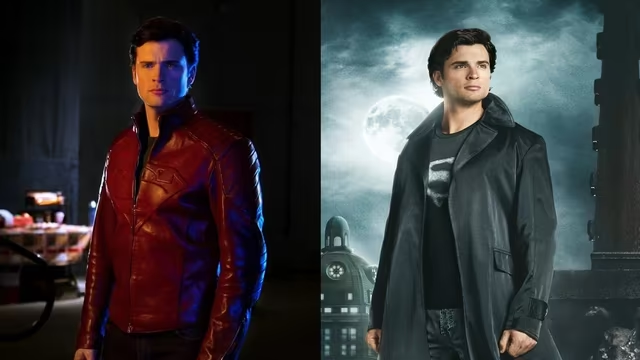If you click on a link and make a purchase we may receive a small commission. Read our editorial policy.
Pulp fiction: Behind the return of Slam Bradley
DC’s original hero Slam Bradley returns in Gotham City: Year One. Here’s how the noir miniseries reevaluates the legacy of the hardboiled detective.

The first DC Comics hero isn’t Superman or Batman or Wonder Woman. In fact, he isn’t a superhero at all. Instead, one of the protagonists in the debut issue of 1937’s Detective Comics #1 is hardboiled detective Sam “Slam” Bradley. Introduced by DC Comics founder Malcolm Wheeler-Nicholson and future Superman creators Jerry Siegel and Joe Shuster, Slam’s comic book history predates all the icons the publisher subsequently became known for. And now, Slam is back in action in the six-issue miniseries Gotham City: Year One , a story set approximately two generations before the rise of Batman in the DC Universe.
When Helen Wayne, the infant heir to the Wayne family fortune – and daughter of Bruce Wayne’s grandparents Richard and Constance – is kidnapped in March 1961, it’s up to Slam to track down the kidnappers and learn what has happened to Helen. Deeply affected by the kidnapping, Slam delves deep into the ugly underbelly of Gotham City and helps expose what made the city so ripe for crime and corruption decades later when Bruce donned the cowl as Batman to root out the evil festering throughout his city. Here is a look at the life and legacy of Sam “Slam” Bradley, how he was eventually incorporated into the main DCU, and how Gotham City: Year One puts the world-weary super sleuth back in the overdue spotlight.
A Hardened Private Eye for Hard Times

Slam was introduced as a character in the classic noir pulp detective mold, just as likely to solve cases with his fists as his deductive wit and often taking jobs from femme fatales. Like other hardboiled detectives of the era, including Dick Tracy and The Spirit, Slam was paired with a kid sidekick in Shorty Morgan, a precocious young boy whose presence was gruffly tolerated by the private eye, with a begrudging sense of respect and care sometimes peeking through that grizzled exterior. Initially operating out of Siegel and Shuster’s hometown of Cleveland, Slam and Shorty later relocated to New York City by Detective Comics #4, as they continued to fight crime in their own rough-and-tumble way.
Slam continued to star in stories printed in Detective Comics, even after the introduction of Batman in 1939’s Detective Comics #27, offering more conventional crime stories than the Caped Crusader’s costumed antics. Slam’s backup stories would cease publication in 1949’s Detective Comics #152, replaced the following issue by stories starring Roy Raymond, a private eye and television personality whose adventures leaned into the growing popularity of television in the United States.
Slam in the DCU

Slam resurfaced in a short story by Len Wein and Jim Aparo in 1981’s Detective Comics #500, in his first major comic appearance in over 30 years, appearing as a much older man for a team-up with DC’s other obscure pulp gumshoes, including the Human Target and Jason Bard, to solve a murder mystery. After the Crisis on Infinite Earths, a younger version of Slam appeared to be working for the Metropolis Police Department, but this was retconned by Ed Brubaker, Paul Gulacy, and Jimmy Palmiotti in 2004’s Catwoman #27 to be Slam Bradley, Jr., the son of the classic detective and father of Catwoman’s daughter.
The classic Slam returned in 2001’s Detective Comics #759 by Brubaker and Darwyn Cooke, now as a veteran private detective operating out of Gotham City and serving as an occasional ally to Batman. Slam was retconned in as the detective investigating the apparent accidental death of Thomas Elliot’s father, suspecting Thomas of murdering his father and maiming his mother but unable to produce solid evidence confirming the aspiring supervillain’s lethal nature. Recently, Slam appeared in a short story in 2021’s Future State: The Next Batman #2 by Paula Sevenbergen, Rob Haynes, and Emanuela Lupacchino, running a bar in an alternate future timeline version of Gotham City, counting Catwoman and Poison Ivy among his clientele.
Outside of main DCU continuity, Slam most notably has played prominent roles in stories by Darwyn Cooke, including the standalone story in Solo #5 and the miniseries DC: The New Frontier. In The New Frontier, Slam is depicted working alongside the Martian Manhunter and Batman to stop a murderous cult operating out of Gotham. Slam made his live-action debut in a Season 1 episode of Batwoman as a Gotham City Police detective saved by Kate Kane (the role of Slam is played by Kurt Szarka).
Gotham City: Year One

For all of his importance within the launch of DC Comics and nearly a century of publishing history, Slam Bradley has something of a checkered and troubling legacy, at least from his initial run of adventures. During his Golden Age adventures in the ‘30s and ‘40s, Slam and Shorty often battled East Asian criminals as part of the trend prevalent in the United States dehumanizing and demonizing Asian immigrants through caricatured depictions as subhuman, stereotypical, and prone to unsavory acts. In addition to featuring these racist stereotypes, Slam was prone to casually utter racial epithets and promote other problematic behavior and cultural views, often played for comedic effect.
Though this history was thankfully and obviously absent from the character’s modern appearances, Gotham City: Year One wears Gotham's casual, societal racism on its sleeve to set the period piece premise of its story. Even before news of Helen Wayne’s kidnapping spreads, the Gotham of King and Hester’s story is an ugly place filled with marginalized communities cruelly discarded by the ruling class and rampant racism towards minorities, to the extent that the credits page of each issue carries a content warning over racially offensive dialogue utilized as an intentional creative choice.
In this sense, Gotham City: Year One tries to acknowledge all aspects of Slam Bradley’s history through a postmodern lens. Slam is back to being the hardboiled gumshoe and a little worse for the wear than he had been in the Golden Age, but fighting against a system that stacks the deck against the oppressed rather than openly and consciously help perpetuate it.
By reevaluating DC’s original hero while tying him to the legacy of Detective Comics’ most iconic character, Gotham City: Year One tries to recontextualize the more problematic era in which Slam Bradley was introduced while giving its protagonist a more nuanced approach, all the while functioning as a love letter to the pulpy noir era where DC made its bones.
Written by Tom King, penciled by Phil Hester, inked by Eric Gapstur, colored by Jordie Bellaire, and lettered by Clayton Cowles, Gotham City: Year One #3 is on sale now from DC Comics. The story continues in the fourth issue, on sale Jan. 3.
DC is bringing Dawn of DC (and more) to Free Comic Book Day 2023 in a surprise move
Follow Popverse for upcoming event coverage and news
Find out how we conduct our review by reading our review policy
Let Popverse be your tour guide through the wilderness of pop culture
Sign in and let us help you find your new favorite thing.
















Comments
Want to join the discussion? Please activate your account first.
Visit Reedpop ID if you need to resend the confirmation email.